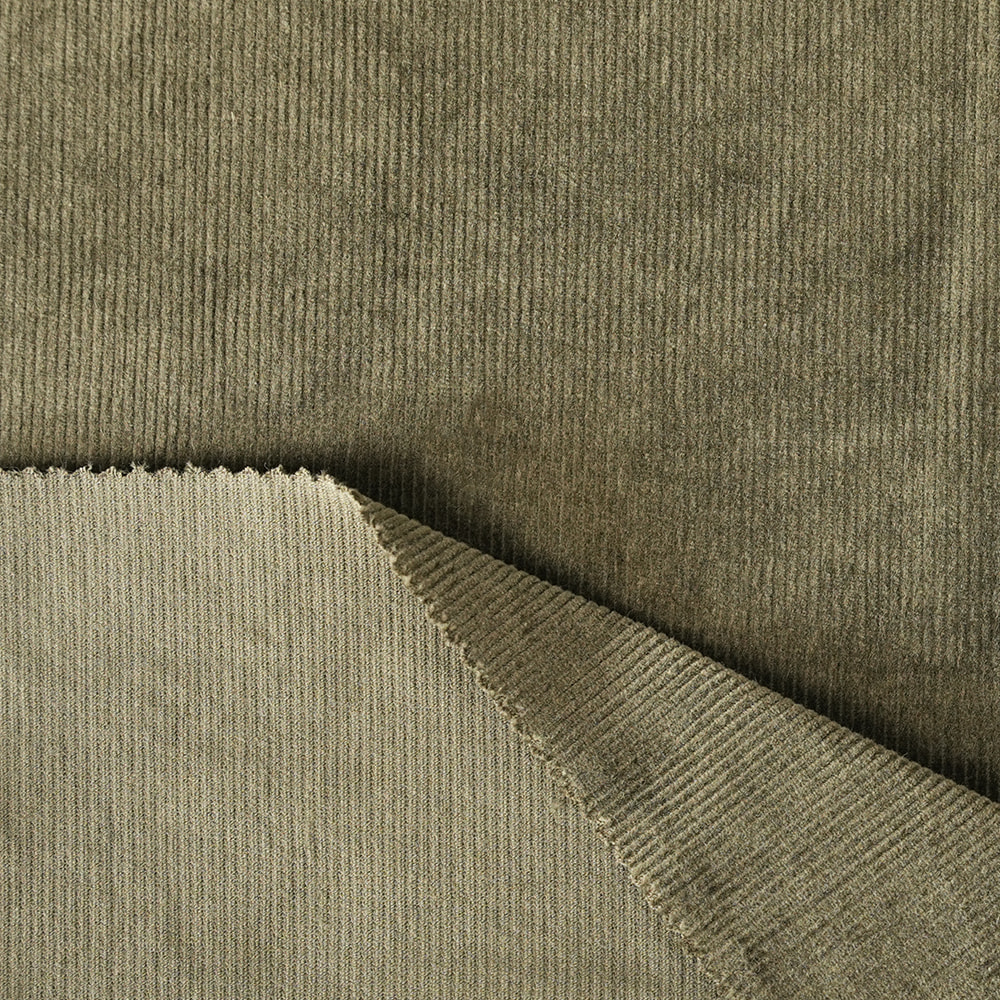Textile Industry Zone, East Hutang Town, Wujin District,213100 Changzhou,China
The ability of Tencel-Cotton Piece-Dyed Corduroy Fabric to maintain structural stability in a high humidity environment is closely related to its material properties, fiber hygroscopicity, and fabric weaving and dyeing processes. The following are several key factors that affect its stability in a high humidity environment:
1. Differences in hygroscopicity between Tencel and cotton fibers
Tencel fiber (Tencel): Tencel is converted from natural wood pulp through a chemical process and has excellent hygroscopicity, which can effectively absorb moisture in a high humidity environment. Its hygroscopicity is higher than that of ordinary cotton fibers, which enables Tencel to maintain good structural stability in a humid environment and quickly dissipate moisture to the outside, helping to avoid fabric expansion or deformation caused by moisture.
Cotton fiber: Cotton fiber has strong hygroscopicity, but its drying speed after absorbing moisture is relatively slow, so the cotton part may be relatively heavy in a humid environment and easily affected by humidity changes. However, the natural characteristics of cotton also make it breathable, allowing air to circulate and help evaporate moisture.
2. Comprehensive performance of Tencel-Cotton blended fabrics
Comprehensive effect: The blend of Tencel and cotton enables this fabric to balance the advantages of both. Tencel fiber has strong hygroscopicity, which can help cotton fiber remain stable in a humid environment and prevent shrinkage or deformation caused by excessive water absorption of cotton fiber. The breathability of cotton fiber helps the fabric to maintain a certain dryness in a high humidity environment and reduce the impact of moisture on the fabric structure.
Fabric stability: The structure of Tencel-Cotton Piece-Dyed Corduroy Fabric usually adds a certain weaving density to make it less likely to deform when the humidity changes. In addition, the weaving structure of corduroy itself is relatively stable, with certain stretch resistance and shrinkage resistance, which further enhances its stability in a humid environment.
3. The influence of dyeing process on humidity adaptability
Dyeing process: The dyeing process used by Tencel-Cotton Piece-Dyed Corduroy Fabric usually adopts the "piece-dyeing" method, that is, the fabric is woven first and then dyed, which helps to ensure a strong bond between the dye and the fabric and reduce color fading and structural changes caused by moisture. In addition, this process can enhance the durability of the fabric at high humidity, making it less susceptible to the influence of environmental humidity.
4. Fabric breathability and drying ability
Breathability: Because both Tencel fiber and cotton fiber have good breathability, this enables Tencel-Cotton Piece-Dyed Corduroy Fabric to quickly remove moisture in a high humidity environment, avoiding moisture accumulation in the fabric, thereby preventing the fabric from deforming or becoming moldy. Higher breathability helps the fabric remain dry in a high humidity environment.
Drying performance: Tencel fiber has strong hygroscopicity and releases moisture quickly, while cotton fiber is slower, so the blend of the two can keep this fabric relatively dry under high humidity conditions, and it is not easily eroded by moisture even in a humid environment.
5. Adaptability of structural design to high humidity
Structural advantages of corduroy: The vertical stripe texture structure of corduroy itself can increase the three-dimensional sense of the fabric, and this design helps to improve the durability and stability of the fabric. Even in a humid environment, this texture can enhance the fabric's ability to resist deformation to a certain extent, avoiding irregular wrinkles or collapse in a high humidity environment.
Stability test: Usually, Tencel-Cotton Piece-Dyed Corduroy Fabric will undergo a certain amount of wetting treatment and shaping before actual application to ensure that the fabric can maintain its appearance and shape stability under humidity changes during use.
6. Effect of maintenance and care on humidity adaptability
Regular cleaning and maintenance: Regular cleaning and keeping dry can help extend the service life of Tencel-Cotton Piece-Dyed Corduroy Fabric and reduce the long-term impact of humidity on the fabric. Avoiding long-term exposure of fabrics to high humidity environments and taking appropriate storage methods (such as keeping them ventilated and dry) can effectively avoid deformation and mold problems caused by moisture accumulation.
Moisture-proof measures: Using moisture-proof bags or keeping the environment ventilated during storage, and avoiding placing fabrics in humid places can help the fabric maintain structural stability in high humidity environments.
Tencel-Cotton Piece-Dyed Corduroy Fabric shows good structural stability in high humidity environments, which is mainly due to the combination of Tencel's high hygroscopicity and cotton's breathability, forming a composite property that can effectively absorb moisture and quickly remove moisture. Its dyeing process, fabric structure and proper maintenance can further enhance its stability under humidity changes and reduce deformation, wrinkles and other performance degradation caused by humidity.












